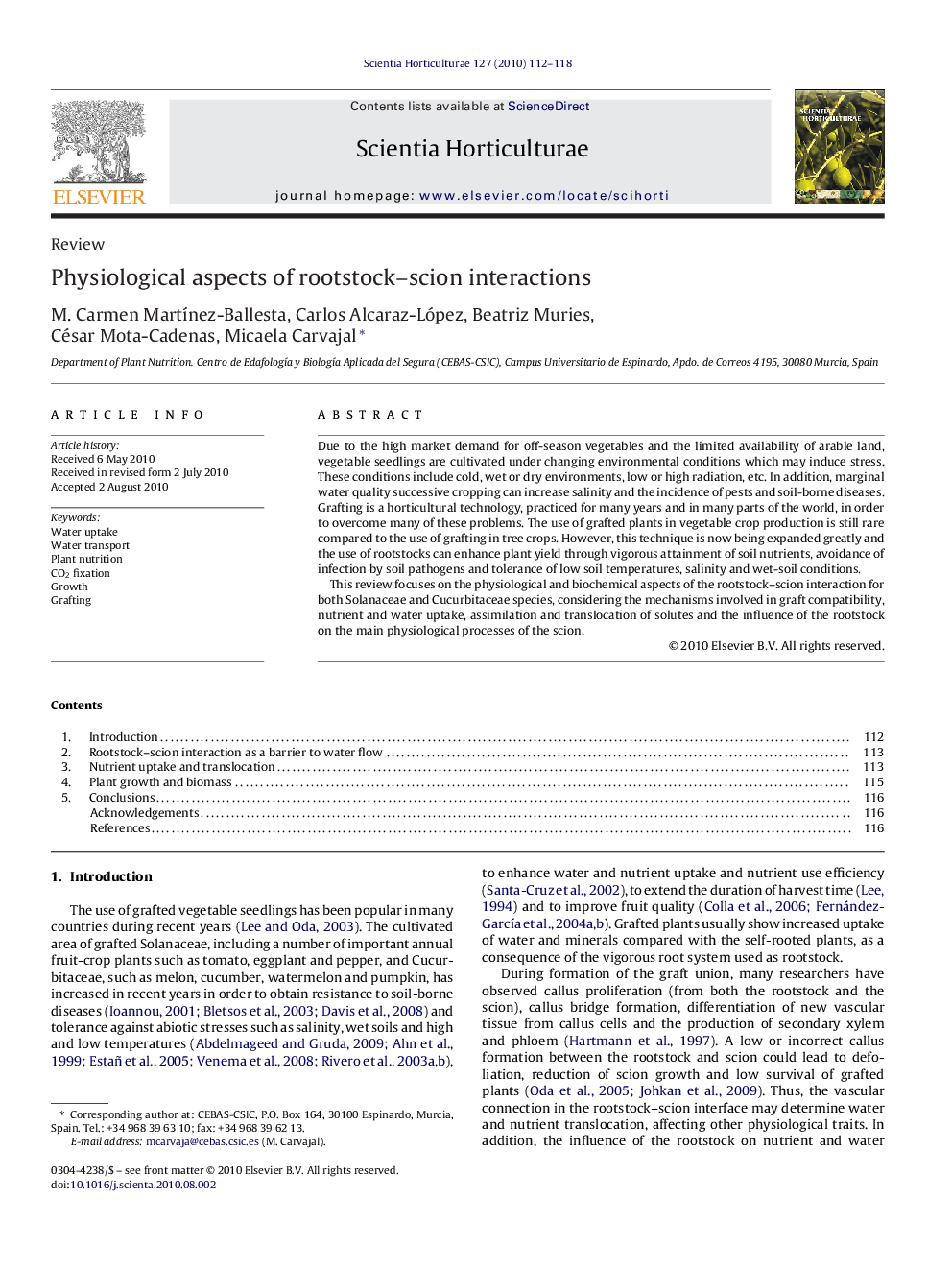| کد مقاله | کد نشریه | سال انتشار | مقاله انگلیسی | نسخه تمام متن |
|---|---|---|---|---|
| 4568529 | 1331304 | 2010 | 7 صفحه PDF | دانلود رایگان |

Due to the high market demand for off-season vegetables and the limited availability of arable land, vegetable seedlings are cultivated under changing environmental conditions which may induce stress. These conditions include cold, wet or dry environments, low or high radiation, etc. In addition, marginal water quality successive cropping can increase salinity and the incidence of pests and soil-borne diseases. Grafting is a horticultural technology, practiced for many years and in many parts of the world, in order to overcome many of these problems. The use of grafted plants in vegetable crop production is still rare compared to the use of grafting in tree crops. However, this technique is now being expanded greatly and the use of rootstocks can enhance plant yield through vigorous attainment of soil nutrients, avoidance of infection by soil pathogens and tolerance of low soil temperatures, salinity and wet-soil conditions.This review focuses on the physiological and biochemical aspects of the rootstock–scion interaction for both Solanaceae and Cucurbitaceae species, considering the mechanisms involved in graft compatibility, nutrient and water uptake, assimilation and translocation of solutes and the influence of the rootstock on the main physiological processes of the scion.
Research highlights▶ Grafted plants for stress resistance, increase water and minerals uptake. ▶ A good graft union is fundamental for communication between scion and rootstock. ▶ The vascular union discontinuities at the graft union may lead to growth inhibition.
Journal: Scientia Horticulturae - Volume 127, Issue 2, 8 December 2010, Pages 112–118